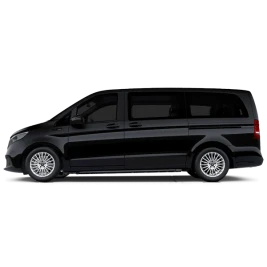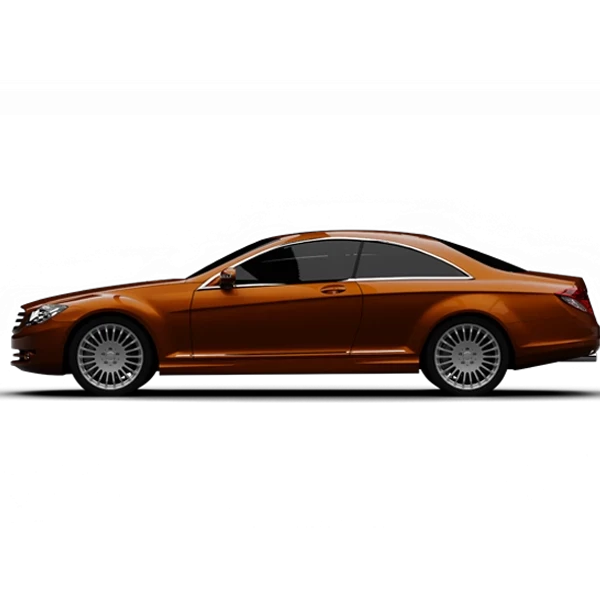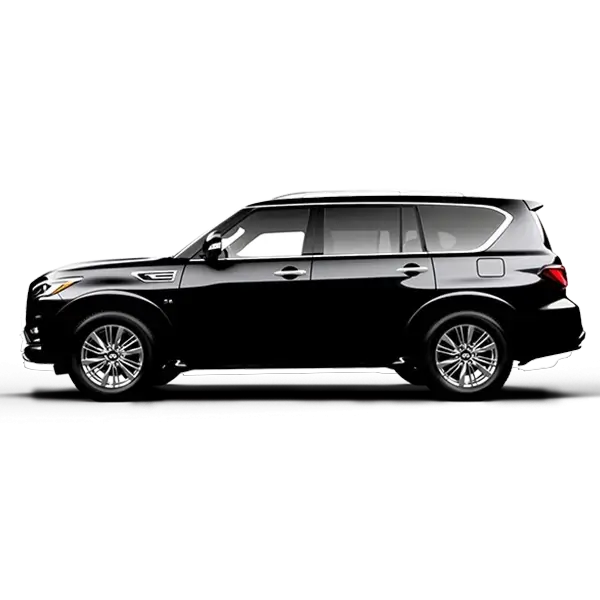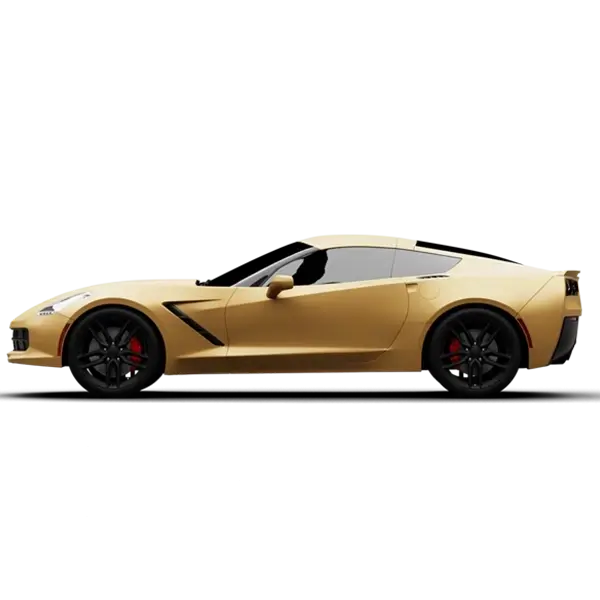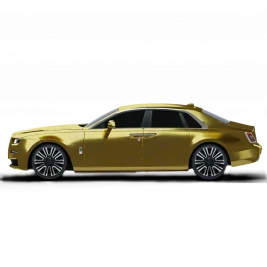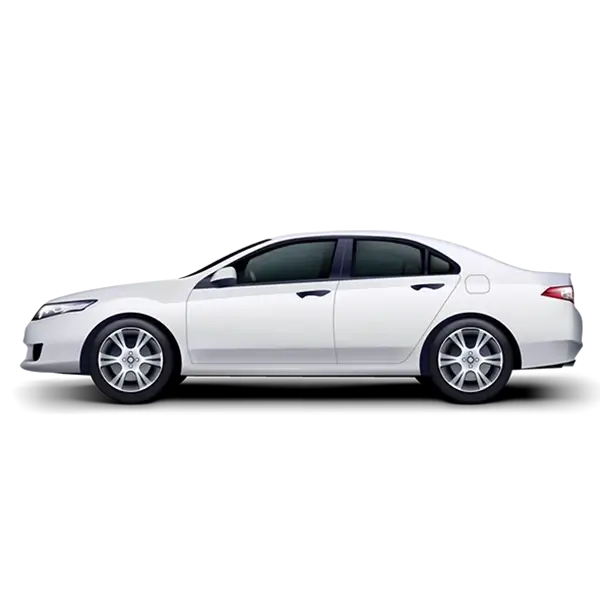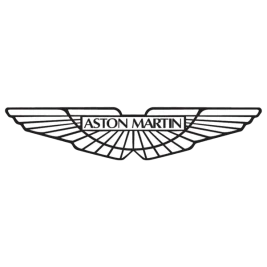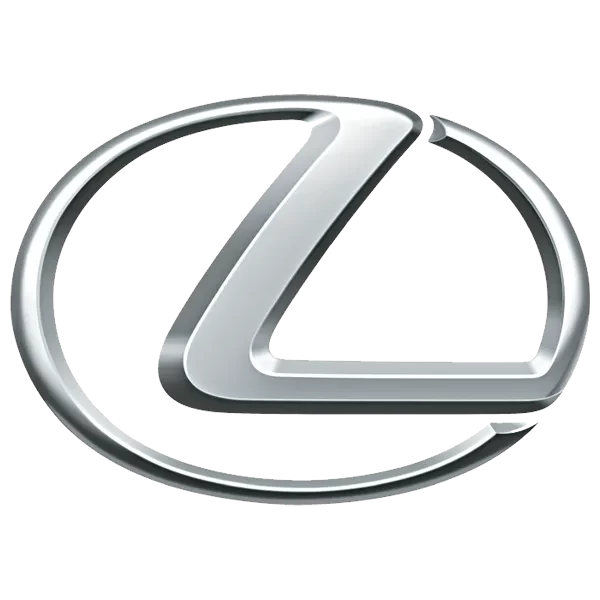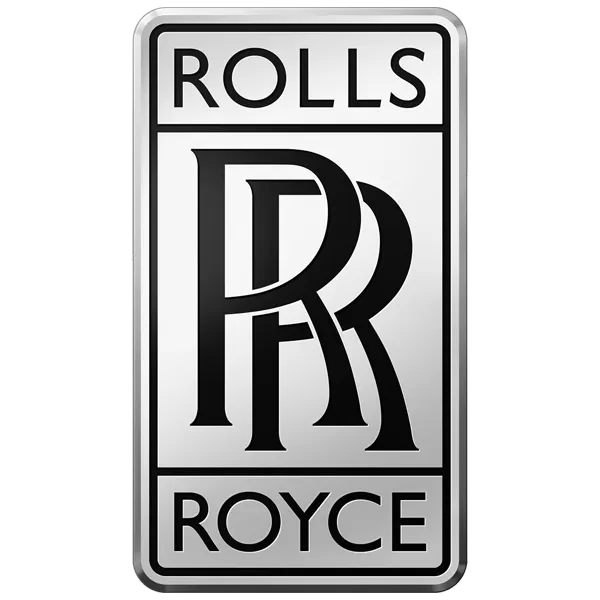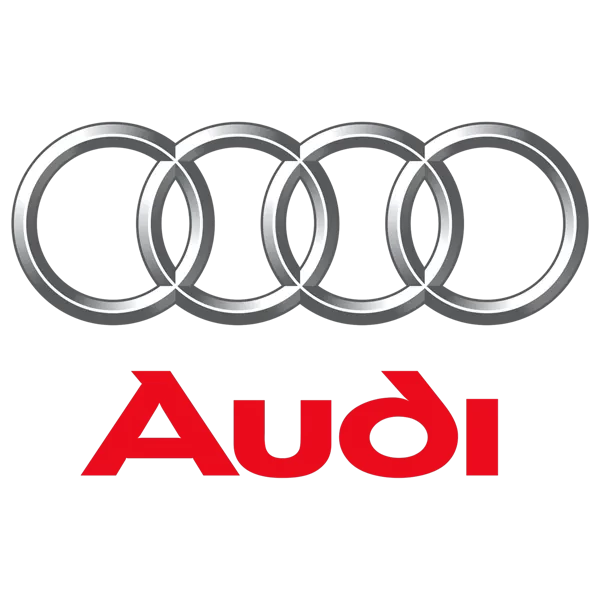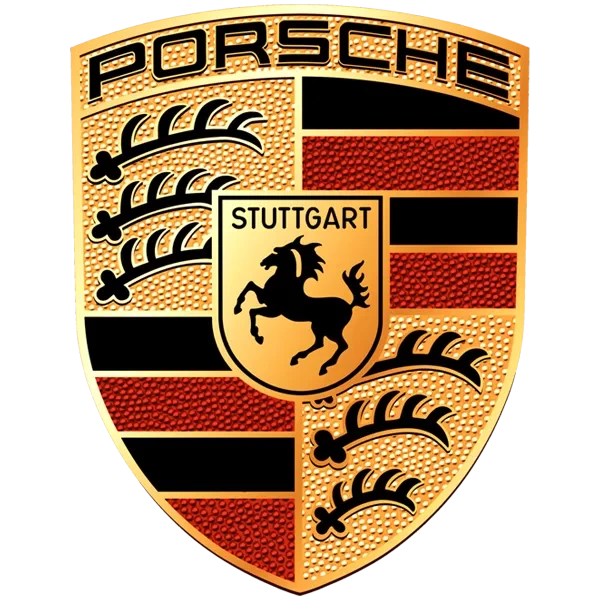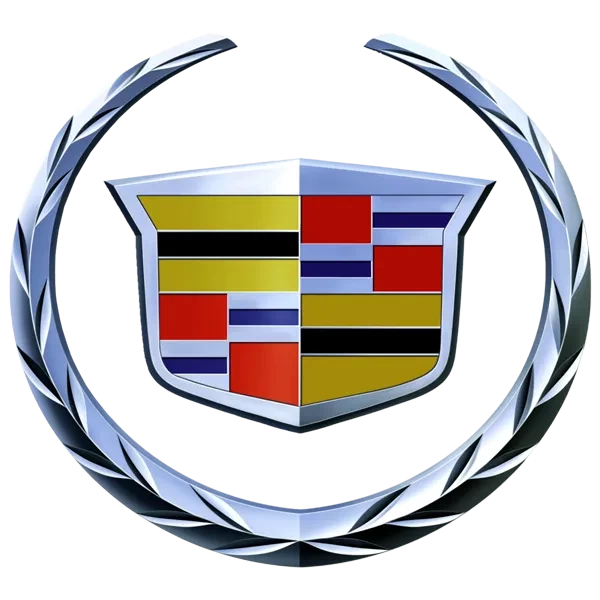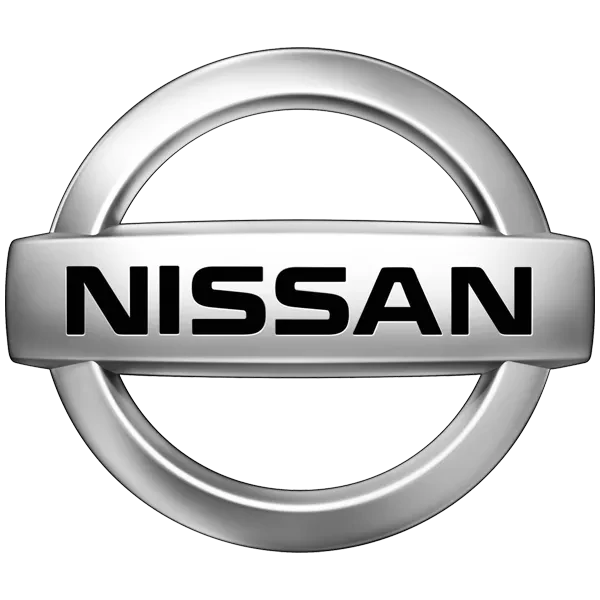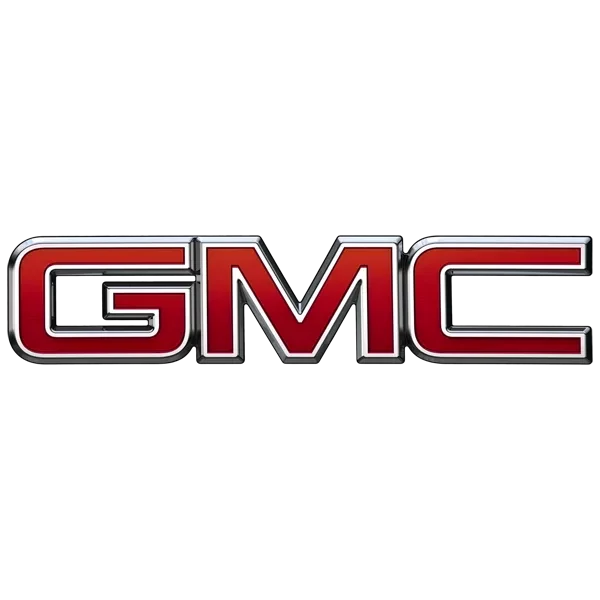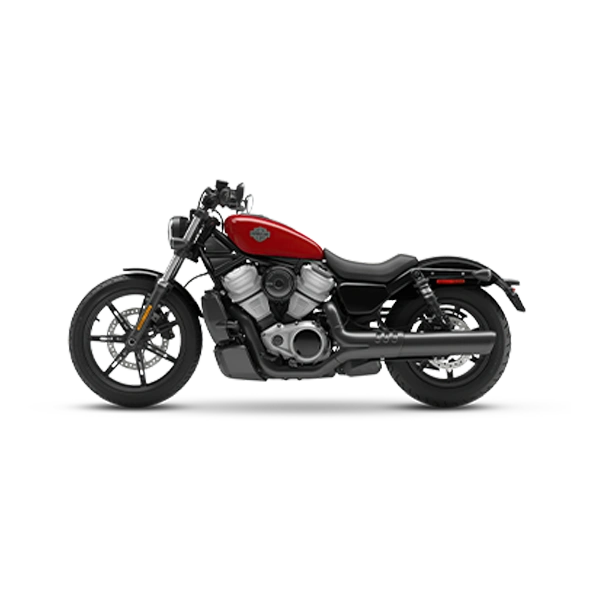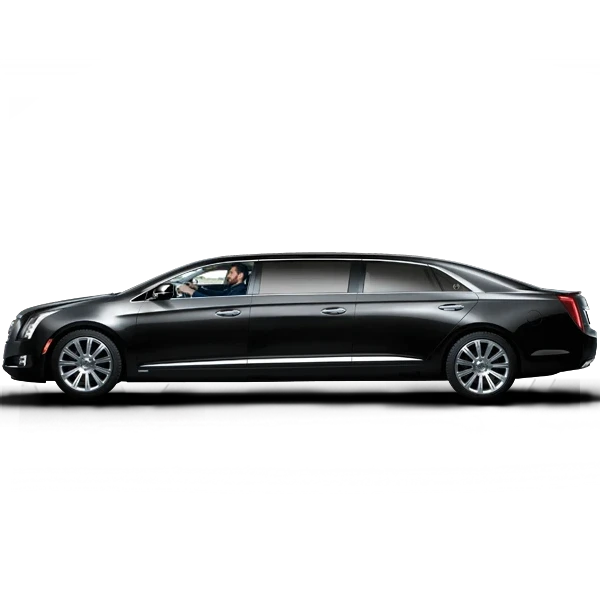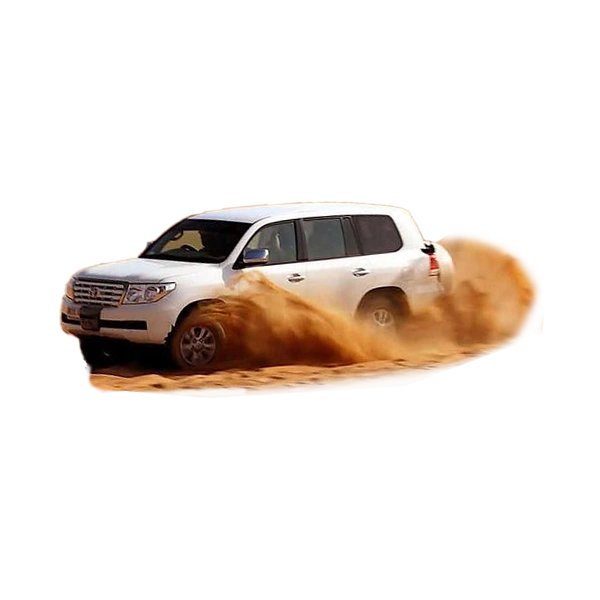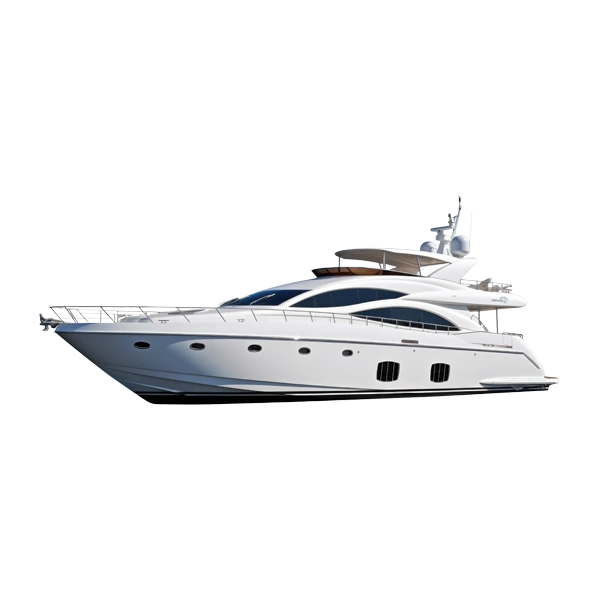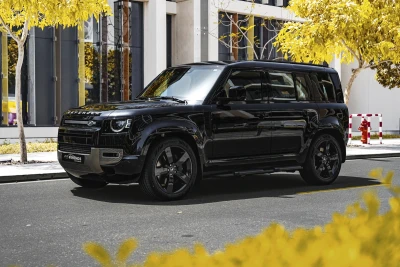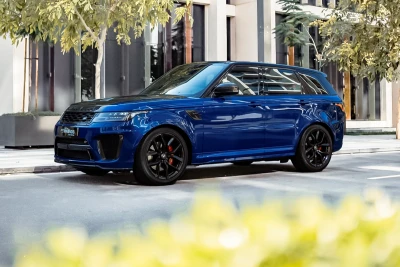35 Most Common Jeep Problems and Solutions
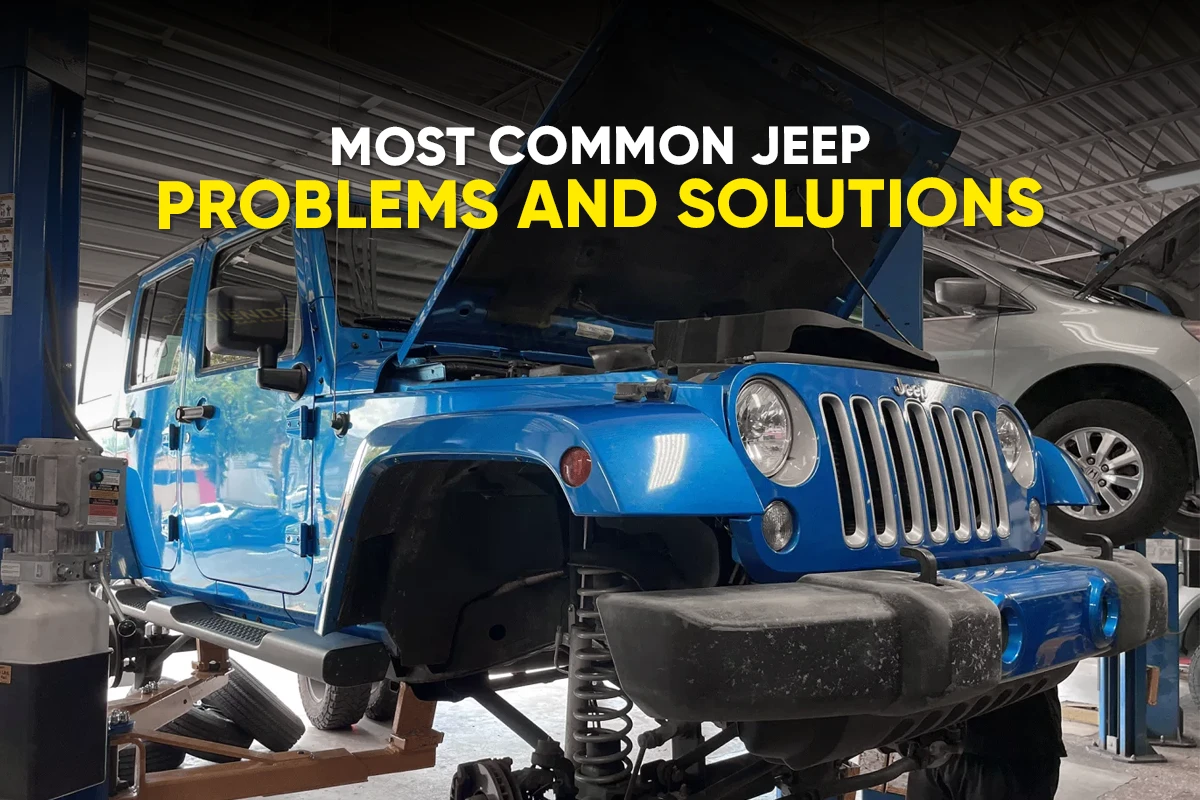
What are the most common Jeep problems and solutions? This comprehensive guide details the 35 most frequent Jeep car issues and their practical fixes, empowering current & future owners to maintain their cars with confidence.
Jeep—a prominent American auto brand takes a fair share of the global market, despite being ranked as mid-tier for reliability. This entails a serious consideration of issues pre-ownership or during. Understanding the existing Jeep car problems and their solutions is crucial for hassle-free ownership or complete avoidance.
Learn about these 35 Jeep problems to avoid unexpected setbacks on the road & ensure a seamless and confident driving experience. Stay ahead of the curve.
35 Common Jeep Issues and Fixes: Overview
Now, let's explore the most frequent Jeep car problems and their practical solutions:
Engine Stalling and Misfires: Dealer diagnostics; Software updates or recalls; Lifter/engine replacement; Battery inspections (for EVs).
Engine Overheating: Cooling system flush; Radiator replacement; Thermostat installation; Sensor recalibration.
Oil System Malfunctions: Seal/gasket replacement; PCV system repair; Piston ring inspection; Engine diagnostic.
Cylinder Head and Rocker Bearing Failures: Head replacement; Rocker arm and bearing replacement; Professional engine repair.
Water Pump Failures: Water pump replacement; Hose replacement; Cooling system flush.
Engine Ticking and Power Loss: Oil system flush; Lifter or valve spring replacement; Dealer diagnostics.
Transmission Shifting and Performance Failures: Fluid flush and replacement; Dealer software reprogram; Wiring harness/solenoid replacement; Transmission rebuild.
Infotainment System Glitches: Software updates; System reboot; Module or display replacement; Wiring harness check.
Battery System Issues: Battery health check; Cable and terminal cleaning; Alternator inspection.
Sensor Malfunctions: Sensor replacement; Diagnostic scans; Control module reprogram.
Wiring Harness and Ground Strap Problems: Harness repair or replacement; Connection cleaning; Ground strap inspection.
Ignition System Malfunctions: Spark plug replacement; Ignition coil or module replacement; Wiring repair.
Alternator Failures: Alternator replacement; Belt inspection; Battery health check.
Clockspring Malfunctions: Clockspring replacement; Steering wheel position sensor recalibration.
Random Warning Lights: Diagnostic scan; Sensor replacement; Control module reprogram.
Infotainment Persistence After Shutdown: Software update; Infotainment module reset or replacement; Power relay inspection.
Lighting System Failures: Bulb replacement; Headlight assembly replacement; Wiring repair.
Power Window and Keyless Entry Malfunctions: Fuse inspection; Regulator or motor replacement; Wiring harness repair.
Bluetooth Connectivity Problems: Infotainment system software update; Module reset; Bluetooth device removal and re-pairing.
Death Wobble and Steering Shake: Steering damper or stabilizer installation; Tie rod and control arm replacement; Wheel balancing and alignment.
Suspension Clunking and Vibration: Bushing, ball joint, or control arm replacement; Shock/strut replacement; Suspension component tightening.
Air Suspension Sagging and Compressor Failure: Air bag replacement; Compressor replacement; Sensor recalibration; Air leak repair.
Tie Rod and Control Arm Wear or Failure: Tie rod and control arm replacement; Wheel alignment.
Improper Steering Welds and Stiff Handling: Dealer diagnostics; Steering system inspection; Welding repair or component replacement.
Excessive Vehicle Wobbling: Tire/wheel balancing; Suspension inspection; Shock/strut replacement.
Brake System Problems: Rotor resurfacing or replacement; Brake fluid flush and replacement; Brake booster replacement; Caliper service.
Fuel Pump and Injector Failures: Fuel pump/injector replacement; Fuel filter cleaning or installation; Diagnostic scans; Fuel system flush.
Poor Fuel Efficiency: Fuel system cleaning; Air filter replacement; Oxygen sensor replacement; Tire pressure check.
Fuel Relay and Vapor Valve Defects: Fuel relay/valve replacement; Wiring repair; Diagnostic scans.
Clogged Fuel Filters: Fuel filter replacement; Fuel system flush.
Turbocharger Malfunctions: Turbo rebuild or replacement; Wastegate system repair; Intake/exhaust leak sealing.
Fuel Tank Concerns: Fuel tank leak repair; Vapor pressure sensor replacement; Fuel tank recall repair.
Water Leaks in Cabin: Seal or gasket replacement; Windshield or sunroof re-sealing; Clog removal from drain channels.
Paint and Valve Stem Corrosion: Rust removal and repainting; Valve stem replacement; Protective coating application.
Headliner Droop and Interior Build Quality Issues: Headliner reattachment or replacement; Interior trim panel re-securing.
Related Article: Most Common Cadillac Problems and Solutions
Engine-Related Issues
1. Engine Stalling and Misfires
What Happens: Drivers of certain Jeep vehicles may experience the engine abruptly shutting down or hesitating during operation, which can manifest as irregular firing in the cylinders or power interruptions, particularly in hybrid setups where electrical components exacerbate the problem. This concern has been highlighted as a recurring challenge in post-2015 Jeeps, often leading to unexpected halts that compromise control.
Affected Models: Wrangler (2016-2025), Cherokee (2016-2025), Grand Cherokee (2016-2025), Renegade (2016-2025), Compass (2017-2025), and hybrid models like the Wrangler 4xe (2021-2025).
Symptoms:
Sudden engine cutouts while driving, especially under acceleration or at steady speeds.
Jerky performance accompanied by misfires or rough idling.
Activation of warning lights on the dashboard, including the check engine indicator.
Challenges in restarting the vehicle right after an incident.
Common Causes:
Deficiencies in the fuel delivery system, such as obstructed filters or malfunctioning pumps.
Sensor failures, notably the crankshaft position sensor, disrupting timing.
Electrical glitches within the Totally Integrated Power Module (TIPM).
In hybrids, software anomalies or battery disruptions affect power flow.
Impact: Such failures heighten accident risks through sudden power loss in traffic, potentially causing collisions or leaving occupants stranded. Over time, they diminish vehicle reliability, inflate maintenance expenses, and may prompt legal claims under warranty or lemon laws, eroding owner satisfaction.
Solutions:
Initiate diagnostics at an authorized dealer to pinpoint electrical or sensor faults, followed by applicable software updates.
Substitute defective parts like sensors or fuel components, often under recall coverage.
For chronic cases, overhaul the TIPM or inspect hybrid systems thoroughly.
Reference NHTSA alerts for ongoing investigations into similar complaints.
Estimated Repair Cost: AED 1,100-18,500 (diagnostics: AED 370-730; sensor swaps: AED 730-1,800; TIPM fixes: AED 3,700-7,400; extensive fuel repairs: AED 7,400+).
Prevention Tips:
Stick to scheduled maintenance, inspecting fuel filters every 30,000 km to prevent blockages.
Address dashboard alerts swiftly to halt minor issues from worsening.
Opt for premium fuel and limit idling in hybrids to preserve component integrity.
Consider yearly electrical checks, especially with added accessories.
2. Engine Overheating
What Happens: The engine temperature rises excessively, potentially leading to steam emissions or performance degradation, an issue noted in various Jeep configurations where cooling systems fail to dissipate heat effectively during demanding conditions.
Affected Models: Wrangler (2016-2025), Cherokee (2016-2025), Grand Cherokee (2016-2025), Gladiator (2019-2025).
Symptoms:
Temperature gauge climbing into the red zone.
Visible steam or coolant leaks under the hood.
Reduced engine power or unusual smells from overheating components.
Warning lights illuminate for high temperatures.
Common Causes:
Faulty thermostats that fail to regulate coolant flow.
Clogged radiators or damaged water pumps impede circulation.
Low coolant levels due to leaks in hoses or gaskets.
Overloading the vehicle in hot climates or during towing.
Impact: Prolonged overheating can warp engine parts, leading to costly breakdowns and safety hazards like sudden stops. It also shortens the vehicle's lifespan and may result in roadside assistance needs, affecting daily usability.
Solutions:
Flush the cooling system and replace the thermostat or pump as required.
Repair any leaks in hoses or the radiator through professional sealing.
Apply manufacturer-recommended coolant and check for software updates.
Consult service bulletins for model-specific overheating remedies.
Estimated Repair Cost: AED 1,800-11,000 (coolant flush: AED 550-1,100; pump replacement: AED 1,800-3,700; radiator repair: AED 5,500+).
Prevention Tips:
Monitor coolant levels regularly and top up with the correct mixture.
Avoid heavy loads in extreme heat without adequate breaks.
Schedule annual cooling system inspections to catch wear early.
Use high-quality coolant to prevent corrosion buildup.
Related Article: Most Common Kia Problems and Solutions
3. Oil System Malfunctions
What Happens: Oil-related complications arise where the lubricant depletes rapidly or escapes, compromising engine protection and leading to warnings or mechanical strain, a prevalent concern in Jeep's V6 engines.
Affected Models: Wrangler (2016-2025), Cherokee (2016-2025), Grand Cherokee (2016-2025), Renegade (2016-2025).
Symptoms:
Frequent low oil warnings on the dashboard.
Visible leaks under the vehicle or smoke from the exhaust.
Engine knocking sounds due to insufficient lubrication.
Reduced performance from oil pressure drops.
Common Causes:
Defective gaskets or seals allowing leaks at timing covers.
Cracked oil filter housings from material fatigue.
Excessive consumption is linked to piston ring wear.
Cooler failures in high-mileage units.
Impact: Ignoring these can cause engine seizure, posing severe safety risks and repair bills that rival the vehicle's worth, alongside potential warranty disputes.
Solutions:
Replace leaking gaskets and housings via dealer service.
Conduct oil consumption tests to identify internal wear.
Upgrade to reinforced components if recurring.
Claim under extended warranties for known defects.
Estimated Repair Cost: AED 2,200-14,700 (gasket fixes: AED 1,100-2,900; housing replacement: AED 3,700-7,400; full overhaul: AED 11,000+).
Prevention Tips:
Change oil every 5,000-7,500 km using synthetic variants.
Inspect for leaks during routine checks.
Avoid over-revving in cold conditions to reduce wear.
Track oil levels monthly for early detection.
4. Cylinder Head and Rocker Bearing Failures
What Happens: Critical internal components like cylinder heads crack or rocker bearings degrade, disrupting valve operation and engine efficiency, often tied to manufacturing variances in Jeep's powertrains.
Affected Models: Grand Cherokee (2016-2025), Wrangler (2016-2025), Cherokee (2016-2025).
Symptoms:
Persistent ticking or knocking from the engine bay.
Loss of power and rough running.
Coolant mixing with oil indicates head cracks.
Check the engine light with misfire codes.
Common Causes:
Defects in Active Fuel Management systems causing lifter collapse.
Inadequate lubrication leading to bearing wear.
Overheating exacerbates material flaws.
Recalled manufacturing issues in crankshaft areas.
Impact: These failures risk catastrophic engine damage, stranding drivers, and incurring high costs, while also contributing to emissions non-compliance.
Solutions:
Diagnostic scans to confirm codes, followed by head or bearing replacements.
Apply recalls for affected batches.
Rebuild the engine if contamination is severe.
Use updated parts per GM bulletins adapted for Jeep.
Estimated Repair Cost: AED 7,400-29,400 (bearing swap: AED 3,700-7,400; head repair: AED 11,000-18,500; engine rebuild: AED 22,000+).
Prevention Tips:
Maintain strict oil change intervals with quality fluids.
Listen for unusual noises and address them promptly.
Avoid aggressive driving until fully warmed.
Review model-specific recalls annually.
Related Article: Most Common Fiat Problems and Solutions
5. Water Pump Failures
What Happens: The pump responsible for circulating coolant ceases to function, halting heat dissipation and risking engine overheat, a noted vulnerability in Jeep's cooling architecture.
Affected Models: Wrangler (2016-2025), Grand Cherokee (2016-2025), Cherokee (2016-2025).
Symptoms:
Coolant leaks pooling under the vehicle.
Overheating episodes during operation.
Whining noises from the pump area.
Steam or boiling sounds from the radiator.
Common Causes:
Bearing wear from prolonged use or contamination.
Seal degradation allowing leaks.
Belt tension issues straining the pump.
Clogged systems reduce flow.
Impact: Sudden failures can lead to roadside breakdowns, potential engine warping, and elevated towing fees, disrupting travel plans.
Solutions:
Replace the pump and flush the system.
Inspect belts and tensioners concurrently.
Use OEM parts for compatibility.
Address any underlying clogs.
Estimated Repair Cost: AED 1,800-7,400 (pump replacement: AED 1,100-2,900; system flush: AED 550-1,100; comprehensive: AED 3,700+).
Prevention Tips:
Replace coolant every 50,000 km to avoid corrosion.
Check for leaks during oil changes.
Ensure proper belt alignment.
Monitor temperature gauges vigilantly.
6. Engine Ticking and Power Loss
What Happens: A rhythmic ticking emanates from the engine, progressing to diminished output, signaling internal wear that hampers performance in affected Jeeps.
Affected Models: Wrangler (2016-2025), Cherokee (2016-2025), Grand Cherokee (2016-2025).
Symptoms:
Audible ticking increases with RPM.
Gradual reduction in acceleration power.
Rough idling or hesitation.
Potential check engine alerts.
Common Causes:
Lifter or valve train defects.
Oil starvation from blockages.
Vacuum leaks affect pressure.
Software glitches in timing control.
Impact: Untreated, it escalates to major repairs, safety concerns from power dips, and lowered fuel economy, affecting long-term ownership.
Solutions:
Diagnostic for valve train inspection and repairs.
Oil system cleaning or lifter replacements.
Software reflashes as per bulletins.
Engine disassembly if severe.
Estimated Repair Cost: AED 2,900-14,700 (lifter fixes: AED 2,200-5,500; timing adjustments: AED 1,100-2,900; major work: AED 7,400+).
Prevention Tips:
Use synthetic oils for better lubrication.
Avoid short trips that prevent full warm-up.
Schedule tune-ups every 50,000 km.
Heed early noises for intervention.
Related Article: Most Common Acura Problems and Solutions
Transmission-Related Issues
7. Transmission Shifting and Performance Failures
What Happens: The transmission in select Jeep models displays unpredictable operation, ranging from hesitant gear engagement to outright breakdowns, which disrupts seamless driving and power transfer, a frequent grievance reported by owners since 2015, sometimes culminating in total system collapse under load.
Affected Models: Cherokee (2016-2025), Wrangler (2016-2025), Grand Cherokee (2016-2025), Compass (2017-2025), Renegade (2016-2025).
Symptoms:
Abrupt or delayed shifts cause vehicle jerking.
Transmission temperature alerts or gear slippage.
Inability to engage certain gears or erratic response.
Unexpected loss of propulsion while in motion.
Common Causes:
Malfunctioning solenoids or degraded clutch assemblies.
Fluid contamination accelerates internal component wear.
Control module software errors misdirect operations.
CVT belt degradation produces distinctive whining sounds.
Impact: These malfunctions can trigger abrupt vehicle halts, elevating collision risks in busy traffic and necessitating expensive towing services. Persistent issues undermine the Jeep's dependability, often leading to substantial financial burdens and reduced resale potential for owners.
Solutions:
Perform fluid exchanges and replace faulty solenoids.
Reprogram or update the transmission control module.
Undertake complete rebuilds for advanced deterioration.
Utilize available recalls targeting known transmission flaws.
Estimated Repair Cost: AED 3,700-29,400 (fluid maintenance: AED 730-1,800; solenoid repairs: AED 2,900-5,500; full rebuild: AED 14,700+).
Prevention Tips:
Replace transmission fluid at 60,000 km intervals.
Refrain from exceeding towing capacity limits.
Regularly scan for fluid leaks under the vehicle.
Ensure software is updated during routine servicing.
Electrical-Related Issues
8. Infotainment System Glitches
What Happens: The Uconnect infotainment unit in various Jeep vehicles frequently malfunctions, resulting in screen lockups or spontaneous reboots that impair access to navigation, media, and connectivity, a persistent post-2015 problem often aggravated by software incompatibilities or hardware strain.
Affected Models: Grand Cherokee (2016-2025), Wrangler (2016-2025), Cherokee (2016-2025), Compass (2017-2025).
Symptoms:
Display freezing or unexpected system restarts.
Inability to use audio playback or GPS functions.
Touchscreen unresponsiveness to user inputs.
Recurring error notifications on the interface.
Common Causes:
Outdated firmware triggering operational conflicts.
Overheated internal modules from extended usage.
Wiring faults or loose connections in the dash.
Device pairing issues with external electronics.
Impact: Although not directly endangering safety, these glitches can distract drivers, heighten frustration during commutes, and lead to repeated service visits, potentially escalating costs beyond warranty periods.
Solutions:
Execute manual system resets and install updates.
Swap out malfunctioning displays or control modules.
Examine and repair any damaged wiring harnesses.
Seek dealer analysis for underlying hardware defects.
Estimated Repair Cost: AED 1,100-7,400 (software updates: AED 370-730; module substitution: AED 2,900-5,500).
Prevention Tips:
Regularly apply over-the-air firmware enhancements.
Limit exposure to high cabin temperatures for devices.
Unplug peripherals when the system is inactive.
Plan yearly electronic diagnostics for early detection.
Related Article: Most Common Subaru Problems and Solutions
9. Battery System Issues
What Happens: Batteries in Jeep models drain unusually fast or fail to retain charge, encompassing main and auxiliary units, resulting in unreliable starts or widespread electrical disruptions, a common complaint in post-2015 vehicles linked to parasitic power draws.
Affected Models: Wrangler (2016-2025), Grand Cherokee (2016-2025), Cherokee (2016-2025), Renegade (2015-2025).
Symptoms:
Sluggish engine cranking or complete no-start scenarios.
Dimming interior or exterior lighting elements.
Necessity for frequent battery jumps to operate.
Low voltage alerts appearing on the dashboard.
Common Causes:
Undetected drains from defective electronic modules.
Corrosion buildup on battery terminals or cables.
Battery degradation in vehicles with heavy usage.
Insufficient charging from alternator malfunctions.
Impact: These problems can strand drivers unexpectedly, pose risks of electrical failures while operating, and occasionally lead to more severe issues like potential fires if shorts occur.
Solutions:
Test battery health and replace if capacity is low.
Eliminate drains by repairing faulty modules or relays.
Clean and secure all terminal connections thoroughly.
Inspect and service the alternator as necessary.
Estimated Repair Cost: AED 730-3,700 (battery replacement: AED 550-1,100; diagnostic repairs: AED 1,100-2,200).
Prevention Tips:
Isolate the battery during long-term vehicle storage.
Clean terminals every six months to prevent buildup.
Conduct annual battery performance evaluations.
Reduce accessory usage when the engine is off.
10. Sensor Malfunctions
What Happens: Key sensors including those for radar, cameras, or crankshaft positions fail intermittently, compromising advanced safety aids and engine controls in contemporary Jeeps, a noted issue post-2015 often stemming from environmental exposure.
Affected Models: Grand Cherokee (2016-2025), Cherokee (2016-2025), Compass (2017-2025), Wrangler (2016-2025).
Symptoms:
Inconsistent safety feature activations or deactivations.
Adaptive systems like cruise control behaving erratically.
Engine performance dips from faulty position readings.
Persistent sensor-related warning indicators.
Common Causes:
Accumulation of dirt or debris blocking sensor fields.
Corrosion in wiring leading to signal interruptions.
Firmware mismatches causing data misinterpretation.
Physical damage from road hazards or impacts.
Impact: Faulty sensors can undermine vehicle safety protocols, increasing accident probabilities and necessitating frequent diagnostics, which disrupt normal usage and add to ownership expenses.
Solutions:
Clean and recalibrate affected sensors professionally.
Replace irreparable units with OEM equivalents.
Update vehicle software to resolve compatibility issues.
Perform alignments after any sensor interventions.
Estimated Repair Cost: AED 1,100-5,500 (cleaning services: AED 370-730; unit replacements: AED 1,800-3,700).
Prevention Tips:
Routinely clear sensors of off-road dirt accumulation.
Shield against severe impacts during adventures.
Install software updates promptly when available.
Inspect sensors following extensive trail driving.
Related Article: Most Common Bentley Problems and Solutions
11. Wiring Harness and Ground Strap Problems
What Happens: Wiring harnesses and ground straps become loose or corroded, causing sporadic electrical failures across multiple systems in Jeeps, a recurring post-2015 challenge exacerbated by exposure to moisture and vibration.
Affected Models: Wrangler (2016-2025), Cherokee (2016-2025), Grand Cherokee (2016-2025), Renegade (2015-2025).
Symptoms:
Intermittent accessory power outages or failures.
Fluctuating lights or erratic instrument readings.
Difficulties with vehicle starting sequences.
Overheated wires indicate potential shorts.
Common Causes:
Environmental factors promoting corrosion on exposed wires.
Aftermarket additions installed without proper securing.
Constant vibrations loosen critical connections.
Initial manufacturing variances in harness quality.
Impact: Such issues risk creating electrical shorts or fires, complicate troubleshooting efforts, and can lead to unexpected breakdowns, heightening safety concerns for drivers.
Solutions:
Thoroughly inspect and secure all harness connections.
Substitute corroded straps with durable alternatives.
Apply protective seals to vulnerable wiring areas.
Conduct complete rewiring for widespread damage.
Estimated Repair Cost: AED 730-5,500 (basic repairs: AED 550-1,800; full harness overhaul: AED 2,900+).
Prevention Tips:
Safeguard wiring during custom modifications.
Clean ground points on an annual basis.
Utilize dielectric grease for corrosion resistance.
Minimize exposure to water and harsh elements.
12. Ignition System Malfunctions
What Happens: Ignition switches or associated wiring in Jeep vehicles fail to operate reliably, preventing starts or inducing stalls, an issue prominent in post-2015 models often related to wear or electrical faults.
Affected Models: Cherokee (2016-2025), Wrangler (2016-2025), Grand Cherokee (2016-2025), Compass (2017-2025).
Symptoms:
Failure to crank or inconsistent ignition response.
Engine abruptly shuts off during drives.
Issues with the key fob or push-start recognition.
Accompanying dashboard warning illuminations.
Common Causes:
Degradation of the ignition switch mechanism.
Short circuits in connecting wiring paths.
Failures within control modules governing ignition.
Loose battery connections amplifying problems.
Impact: These malfunctions reduce overall vehicle trustworthiness, potentially stranding users in inconvenient or unsafe situations and requiring immediate roadside aid.
Solutions:
Replace worn switches or damaged wiring segments.
Run comprehensive diagnostic code scans.
Reprogram faulty ignition control modules.
Verify and stabilize battery connections.
Estimated Repair Cost: AED 1,100-3,700 (switch replacement: AED 730-1,800; wiring fixes: AED 1,100-2,200).
Prevention Tips:
Handle ignition keys or buttons gently.
Perform regular electrical system inspections.
Avoid overloading with excessive accessories.
Update key fob batteries proactively.
Related Article: Most Common Range Rover Problems and Solutions
13. Alternator Failures
What Happens: The alternator ceases to generate adequate power, causing battery depletion and eventual system shutdowns in Jeeps, a documented post-2015 concern tied to component fatigue or overload.
Affected Models: Wrangler (2016-2025), Cherokee (2016-2025), Grand Cherokee (2016-2025).
Symptoms:
Progressive dimming of headlights and dash lights.
Persistent battery discharge warning signals.
Vehicle stalling shortly after initial start.
Widespread electrical component malfunctions.
Common Causes:
Internal bearing wear from extended operation.
Diode breakdowns disrupt current flow.
Drive belt slippage or improper tension.
Excessive electrical demands from add-ons.
Impact: Complete power failures can occur while driving, posing significant hazards and leading to towing necessities, alongside potential damage to other electrical parts.
Solutions:
Replace the failing alternator unit entirely.
Adjust or replace associated drive belts.
Conduct electrical load testing for verification.
Repair any contributing wiring discrepancies.
Estimated Repair Cost: AED 1,800-5,500 (alternator swap: AED 1,100-2,900; belt services: AED 550-1,100).
Prevention Tips:
Inspect drive belts for wear regularly.
Limit high-draw accessory installations.
Test the alternator output annually.
Maintain clean electrical connections.
14. Clockspring Malfunctions
What Happens: The clockspring assembly fractures or wears, impairing airbag deployment and steering wheel controls in Jeeps, an issue surfacing post-2015 frequently due to steering motion stress.
Affected Models: Wrangler (2016-2025), Grand Cherokee (2016-2025), Cherokee (2016-2025).
Symptoms:
Airbag system warning lights activating.
Horn or control buttons becoming inoperative.
Erratic chime sounds from the steering area.
Compromised steering wheel functionality.
Common Causes:
Cumulative wear from repeated wheel turning.
Intrusion of debris into the assembly.
Flaws in original manufacturing materials.
Impacts or strains from off-road activities.
Impact: Defective clocksprings jeopardize occupant safety by disabling airbags, potentially worsening crash outcomes, and inviting regulatory scrutiny or recalls.
Solutions:
Replace the compromised clockspring component.
Reset airbag systems post-replacement.
Perform diagnostic checks for related faults.
Pursue warranty or recall coverage if applicable.
Estimated Repair Cost: AED 1,100-3,700 (clockspring replacement: AED 730-1,800; system resets: AED 370-730).
Prevention Tips:
Employ smooth, deliberate steering maneuvers.
Steer clear of rough terrain impacts.
Inspect the steering column periodically.
Protect against dust and moisture ingress.
Related Article: Most Common GMC Problems and Solutions
15. Random Warning Lights
What Happens: Dashboard warning lights activate without apparent cause, suggesting phantom faults in Jeep systems, a post-2015 phenomenon often rooted in electrical or sensor inconsistencies.
Affected Models: Cherokee (2016-2025), Grand Cherokee (2016-2025), Wrangler (2016-2025).
Symptoms:
Multiple indicators flashing simultaneously.
Engagement of reduced performance modes.
Intermittent alerts without consistency.
No discernible change in vehicle behavior.
Common Causes:
Glitches in various onboard sensors.
Wiring disruptions causing false signals.
Outdated software generating errors.
Voltage fluctuations from battery issues.
Impact: False warnings can confuse drivers, lead to unnecessary repairs, and mask genuine problems, potentially compromising safety over time.
Solutions:
Scan and clear diagnostic trouble codes.
Install software updates to correct bugs.
Repair or replace faulty wiring sections.
Stabilize battery voltage to prevent spikes.
Estimated Repair Cost: AED 370-2,200 (scans: AED 370-730; wiring fixes: AED 550-1,100).
Prevention Tips:
Ensure consistent electrical system voltage.
Keep sensors free of contaminants.
Apply updates as soon as released.
Avoid unverified aftermarket modifications.
16. Infotainment Persistence After Shutdown
What Happens: The radio or infotainment system remains powered on after vehicle shutdown, leading to battery drainage in Jeeps, an electrical glitch noted post-2015 tied to relay or software faults.
Affected Models: Grand Cherokee (2016-2025), Wrangler (2016-2025), Cherokee (2016-2025).
Symptoms:
System continues to function post-ignition off.
Accelerated battery discharge overnight.
Excessive heat from the unit when parked.
Requirement for manual power cycling.
Common Causes:
Stuck relays failing to cut power.
Software hangs preventing proper shutdown.
Short circuits in related wiring.
Defective control modules sustaining operation.
Impact: Persistent operation drains batteries, causing start failures and potential long-term damage to electrical components, increasing inconvenience for owners.
Solutions:
Replace malfunctioning power relays.
Execute software resets or updates.
Inspect and mend wiring shorts.
Overhaul affected control modules.
Estimated Repair Cost: AED 730-2,900 (relay swaps: AED 550-1,100; module repairs: AED 1,100-1,800).
Prevention Tips:
Manually deactivate systems before exiting.
Install timely software enhancements.
Disconnect during prolonged inactivity.
Test relays during maintenance checks.
Related Article: Most Common MINI Problems and Solutions
17. Lighting System Failures
What Happens: Exterior or interior lights malfunction, such as brake or high-beam failures, diminishing visibility in Jeeps, or a post-2015 electrical issue often due to bulb or wiring degradation.
Affected Models: Wrangler (2016-2025), Cherokee (2016-2025), Grand Cherokee (2016-2025).
Symptoms:
Lights dimming or flickering inconsistently.
Complete failure of specific beam types.
Associated warning lights on the dashboard.
Frequent fuse blowouts in the circuit.
Common Causes:
Premature burnout of standard bulbs.
Corrosion affecting wiring and connectors.
Faulty switches controlling light operations.
Module errors in advanced lighting systems.
Impact: Reduced visibility heightens nighttime driving risks, potentially leading to accidents or traffic violations, alongside repair inconveniences.
Solutions:
Replace burned-out bulbs with compatible ones.
Clean or repair corroded wiring elements.
Substitute defective control switches.
Diagnose and fix module-related issues.
Estimated Repair Cost: AED 370-1,800 (bulb changes: AED 370-730; wiring repairs: AED 550-1,100).
Prevention Tips:
Upgrade to longer-lasting LED bulbs.
Regularly clean light lenses and housings.
Prevent electrical circuit overloads.
Test lighting systems periodically.
18. Power Window and Keyless Entry Malfunctions
What Happens: Power windows or keyless entry systems become unresponsive, trapping users or denying access in Jeeps, a post-2015 electrical fault linked to motor or fob issues.
Affected Models: Grand Cherokee (2016-2025), Cherokee (2016-2025), Wrangler (2016-2025).
Symptoms:
Windows failing to raise or lower properly.
Key fobs not unlocking doors remotely.
Intermittent door lock mechanism issues.
Drains on battery from constant attempts.
Common Causes:
Wear in window regulator motors.
Depleted batteries in key fobs.
Breaks or shorts in door wiring.
Glitches in entry control modules.
Impact: These failures compromise vehicle accessibility and convenience, potentially locking out owners or causing security concerns in emergencies.
Solutions:
Replace worn motors or depleted fobs.
Repair damaged door wiring harnesses.
Reprogram malfunctioning entry modules.
Change fob batteries and test systems.
Estimated Repair Cost: AED 730-2,900 (motor fixes: AED 550-1,100; reprogramming: AED 370-730).
Prevention Tips:
Use windows and fobs with care.
Replace fob batteries annually.
Shield from moisture and impacts.
Lubricate mechanisms as recommended.
Related Article: Most Common BMW Problems and Solutions
19. Bluetooth Connectivity Problems
What Happens: Bluetooth pairings in Jeep infotainment systems fail to connect or maintain links with devices, disrupting hands-free calls and media, a common post-2015 glitch from software or hardware mismatches.
Affected Models: Wrangler (2016-2025), Grand Cherokee (2016-2025), Cherokee (2016-2025).
Symptoms:
Connections dropping during calls or streaming.
Repeated pairing failures with devices.
Audio static or transmission delays.
System reboots interrupt usage.
Common Causes:
Obsolete software lacking device support.
External signal interference sources.
Faulty Bluetooth modules in the unit.
Incompatibilities with specific phones.
Impact: Unreliable connectivity can distract drivers, violate hands-free laws, and frustrate users reliant on integrated features for daily commutes.
Solutions:
Apply the latest software firmware updates.
Reset Bluetooth pairings and reconfigure.
Replace defective internal modules.
Verify device compatibility beforehand.
Estimated Repair Cost: AED 370-1,800 (updates: AED 370-730; module repairs: AED 550-1,100).
Prevention Tips:
Update system software consistently.
Clear device cache before pairing.
Select verified compatible peripherals.
Reduce nearby signal interferences.
Suspension and Steering-Related Issues
20. Death Wobble and Steering Shake
What Happens: Severe front-end vibrations emerge suddenly, often at highway speeds after encountering road irregularities, rendering the steering unstable in solid-axle Jeeps, a notorious post-2015 problem despite engineering attempts to mitigate it.
Affected Models: Wrangler JL (2018-2025), Wrangler JK (2016-2018), Gladiator (2019-2025), Grand Cherokee off-road models.
Symptoms:
Intense steering wheel oscillations post-bump.
Temporary steering control loss necessitating slowdown.
Audible clunking from suspension elements.
Worsening shakes if not immediately addressed.
Common Causes:
Worn track bars or degraded ball joints.
Unbalanced tires or wheel misalignment.
Geometry alterations from aftermarket lifts.
Loose fasteners amplified by off-road stress.
Impact: The wobble induces panic, raising accident risks on roadways, and recurrent episodes demand ongoing repairs, sometimes culminating in vehicle buybacks or legal disputes.
Solutions:
Inspect and replace worn suspension parts.
Balance tires and correct wheel alignments.
Install upgraded stabilizers for stability.
Apply factory-approved modifications or recalls.
Estimated Repair Cost: AED 1,800-11,000 (alignments: AED 550-1,100; joint replacements: AED 1,800-3,700; full upgrades: AED 7,400+).
Prevention Tips:
Check suspension after every off-road excursion.
Maintain optimal tire pressure and balance.
Choose high-quality lift kits with supports.
Navigate uneven surfaces cautiously at speed.
Related Article: Most Common Honda Problems and Solutions
21. Suspension Clunking and Vibration
What Happens: Suspension systems produce clunking noises and vibrations, indicating component wear that affects ride smoothness in Jeeps, a post-2015 issue commonly reported in off-road-focused models.
Affected Models: Wrangler (2016-2025), Gladiator (2019-2025), Cherokee (2016-2025), Grand Cherokee (2016-2025).
Symptoms:
Clunk sounds when traversing bumps or turns.
Ongoing vibrations felt through the chassis.
Accelerated or uneven tire tread wear.
Instability in handling during maneuvers.
Common Causes:
Deteriorated bushings in suspension arms.
Failed shock absorbers losing damping ability.
Loose mounting bolts from vibrations.
Damage sustained during off-road activities.
Impact: Persistent clunking reduces comfort, hastens tire replacement needs, and may signal impending failures that compromise vehicle control.
Solutions:
Replace degraded bushings and absorbers.
Tighten all loose suspension fasteners.
Align wheels to correct imbalances.
Upgrade for enhanced durability in heavy use.
Estimated Repair Cost: AED 1,100-7,400 (bushing swaps: AED 730-1,800; absorber replacements: AED 1,100-2,900).
Prevention Tips:
Lubricate movable parts at regular intervals.
Avoid overloading beyond rated capacities.
Inspect suspension components annually.
Drive gently over rough terrain.
22. Air Suspension Sagging and Compressor Failure
What Happens: Air suspension systems deflate unevenly or compressors fail, causing vehicle lowering and ride instability in equipped Jeeps, a post-2015 fault often in luxury or off-road variants.
Affected Models: Grand Cherokee (2016-2025), Wagoneer (2022-2025), Cherokee (2016-2025).
Symptoms:
Uneven sagging, particularly at the rear.
Noisy compressor operation or failures.
Height adjustment warning notifications.
Harsh rides over uneven surfaces.
Common Causes:
Leaks in airbags or connecting lines.
Compressor overload from frequent adjustments.
Faulty height sensors misreading positions.
Effects from extreme cold weather conditions.
Impact: Sagging impairs ground clearance, affects towing capabilities, and can lead to component damage if driven in compromised states.
Solutions:
Seal or replace leaking airbags and lines.
Install new compressors for failed units.
Recalibrate height sensors accurately.
Swap out defective air suspension elements.
Estimated Repair Cost: AED 3,700-14,700 (leak repairs: AED 1,800-3,700; compressor swaps: AED 5,500+).
Prevention Tips:
Do not exceed maximum load recommendations.
Allow warm-up in cold environments.
Check for leaks during inspections.
Adhere to service schedules strictly.
Related Article: Most Common Mercedes Problems and Solutions
23. Tie Rod and Control Arm Wear or Failure
What Happens: Steering linkages like tie rods and control arms wear prematurely or fail, creating play and alignment issues in Jeeps, a post-2015 concern heightened by off-road demands.
Affected Models: Wrangler (2016-2025), Gladiator (2019-2025), Cherokee (2016-2025).
Symptoms:
Vehicle wandering or pulling during drives.
Clunking noises on turns or bumps.
Uneven wear patterns on tires.
Vibrations transmitted to the steering.
Common Causes:
Stress from rugged off-road environments.
Corrosion attacks metal components.
Insufficient lubrication of joints.
Impacts from potholes or obstacles.
Impact: Wear compromises steering precision, elevating control loss risks and necessitating frequent tire replacements.
Solutions:
Replace worn tie rods and arms.
Perform comprehensive wheel alignments.
Apply grease to serviceable joints.
Upgrade to robust aftermarket parts.
Estimated Repair Cost: AED 1,800-5,500 (part replacements: AED 1,100-2,900; alignments: AED 550-1,100).
Prevention Tips:
Grease fittings at recommended intervals.
Drive cautiously to minimize stress.
Inspect linkages after rough usage.
Opt for durable replacement components.
24. Improper Steering Welds and Stiff Handling
What Happens: Factory welds in steering components fail or cause rigidity, impairing maneuverability in Jeeps, an issue identified post-2015 related to production quality.
Affected Models: Wrangler (2016-2025), Cherokee (2016-2025), Grand Cherokee (2016-2025).
Symptoms:
Stiff or unresponsive steering feel.
Vehicle pulling to one side consistently.
Noises during steering wheel movements.
Increased driver fatigue on long trips.
Common Causes:
Deficiencies in initial weld integrity.
Corrosion weakens frame attachments.
Shifts in alignment from wear.
Component fatigue over mileage.
Impact: Stiff handling poses navigation challenges, heightening fatigue and potential mishaps in dynamic driving conditions.
Solutions:
Inspect welds and perform necessary repairs.
Correct alignments to restore balance.
Reinforce components with additional supports.
Check for and apply relevant recalls.
Estimated Repair Cost: AED 2,200-11,000 (weld fixes: AED 1,100-2,900; reinforcements: AED 3,700+).
Prevention Tips:
Verify welds during purchase inspections.
Apply anti-corrosion treatments regularly.
Schedule alignments every 20,000 km.
Avoid collisions that strain structures.
Related Article: Most Common Ford Problems and Solutions
25. Excessive Vehicle Wobbling
What Happens: Overall chassis instability manifests beyond typical wobbles, stemming from multiple sources in Jeeps, a post-2015 complaint affecting balance and control.
Affected Models: Wrangler (2016-2025), Gladiator (2019-2025), Cherokee (2016-2025).
Symptoms:
Continuous shaking throughout the vehicle.
Pronounced tire or wheel wobbling.
Uneven ride quality on flat surfaces.
Loose feel in steering response.
Common Causes:
Faulty wheel bearings allowing play.
Loosened suspension mounting points.
Defective or unbalanced tire sets.
Imbalances from improper wheel setups.
Impact: Excessive wobbling accelerates component wear, poses tire hazards, and diminishes driving confidence, potentially leading to safety incidents.
Solutions:
Replace damaged wheel bearings promptly.
Balance and rotate tires routinely.
Tighten all suspension connections securely.
Conduct thorough undercarriage inspections.
Estimated Repair Cost: AED 1,100-5,500 (bearing swaps: AED 730-1,800; balancing: AED 370-730).
Prevention Tips:
Rotate tires every 10,000 km.
Check wheel balance after changes.
Secure bolts post-maintenance.
Invest in quality tire products.
Brake-Related Issues
26. Brake System Problems
What Happens: Braking systems exhibit noises, premature wear, or rotor warping, reducing stopping efficiency in Jeeps, a consolidated post-2015 issue encompassing grinding, vibrations, and uneven performance.
Affected Models: Wrangler (2016-2025), Cherokee (2016-2025), Grand Cherokee (2016-2025), Compass (2017-2025).
Symptoms:
Grinding or squealing during brake application.
Pedal or wheel vibrations when stopping.
Extended distances required for halts.
Uneven pad or rotor wear patterns.
Common Causes:
Rapid depletion of brake pad materials.
Heat-induced warping of disc rotors.
Sticking calipers impede release.
Substandard parts accelerating degradation.
Impact: Compromised brakes elevate collision risks, necessitate frequent replacements, and can lead to regulatory failures during inspections.
Solutions:
Replace pads and resurface or swap rotors.
Service or replace the sticking calipers.
Flush brake fluid to remove contaminants.
Align wheels to ensure even wear.
Estimated Repair Cost: AED 1,100-5,500 (pad replacements: AED 730-1,800; rotor services: AED 1,800-3,700).
Prevention Tips:
Apply the brakes smoothly to reduce heat.
Inspect brakes annually for wear.
Use premium quality replacement parts.
Avoid overloading to ease strain.
Related Article: Most Common Chevrolet Problems and Solutions
Fuel System-Related Issues
27. Fuel Pump and Injector Failures
What Happens: Fuel pumps or injectors cease proper delivery, leading to engine hesitations or failures in Jeeps, a post-2015 problem often resulting in unreliable performance.
Affected Models: Wrangler (2016-2025), Cherokee (2016-2025), Grand Cherokee (2016-2025), Renegade (2016-2025).
Symptoms:
Engine sputters under acceleration.
Difficult or prolonged starting attempts.
Sudden loss of power while driving.
Frequent stalling at idle or speed.
Common Causes:
Fuel contamination clogs components.
Electrical failures in pump circuits.
Wear from high-mileage operation.
Blockages in associated fuel lines.
Impact: Failures can strand vehicles, pose fire hazards from leaks, and require towing, disrupting mobility and safety.
Solutions:
Replace defective pumps or injectors.
Clean or replace clogged fuel lines.
Change filters to prevent recurrences.
Diagnose electrical issues thoroughly.
Estimated Repair Cost: AED 1,800-7,400 (pump swaps: AED 1,100-2,900; injector services: AED 730-1,800).
Prevention Tips:
Use reputable high-quality fuel sources.
Replace filters at 30,000 km marks.
Avoid running tanks to extreme lows.
Schedule annual fuel system checks.
28. Poor Fuel Efficiency
What Happens: Fuel consumption exceeds expected levels, raising operational costs in Jeeps, a post-2015 efficiency issue tied to system inefficiencies or maintenance lapses.
Affected Models: Cherokee (2016-2025), Compass (2017-2025), Renegade (2016-2025), Wrangler (2016-2025).
Symptoms:
Need for more frequent refueling stops.
Reduced driving range per tank.
Sluggish performance or hesitations.
Unusual exhaust odors or emissions.
Common Causes:
Faulty oxygen or fuel sensors.
Clogged injectors or filters.
Inefficient driving habits or loads.
Minor leaks in fuel delivery lines.
Impact: Lower efficiency inflates fuel expenses, contributes to environmental concerns, and may indicate underlying mechanical problems.
Solutions:
Perform engine tune-ups regularly.
Repair or replace faulty sensors.
Clean fuel system components thoroughly.
Adjust habits for optimal efficiency.
Estimated Repair Cost: AED 370-2,900 (tune-ups: AED 370-730; sensor fixes: AED 550-1,100).
Prevention Tips:
Maintain steady, efficient driving speeds.
Follow maintenance schedules diligently.
Monitor tire pressures consistently.
Keep vehicle loads lightweight.
Related Article: Most Common Toyota Problems and Solutions
29. Fuel Relay and Vapor Valve Defects
What Happens: Relays or vapor valves malfunction, interrupting fuel supply or emissions control in Jeeps, a post-2015 defect causing operational disruptions.
Affected Models: Wrangler (2016-2025), Cherokee (2016-2025), Grand Cherokee (2016-2025).
Symptoms:
Hesitant engine starting sequences.
Detectable fuel vapor odors.
Illumination of check engine lights.
Intermittent stalling under load.
Common Causes:
Short circuits in relay electronics.
Valves sticking to contaminants.
Corrosion impacting valve functionality.
Inherent manufacturing deficiencies.
Impact: Defects can fail emissions tests, pose environmental hazards, and lead to unreliable vehicle performance.
Solutions:
Swap out defective relays promptly.
Repair or replace stuck valves.
Mend corroded wiring connections.
Apply recalls for identified defects.
Estimated Repair Cost: AED 730-2,200 (relay replacements: AED 550-1,100; valve fixes: AED 370-730).
Prevention Tips:
Clean fuel systems periodically.
Choose clean, quality fuel.
Shield from contaminant exposure.
Inspect during routine servicing.
30. Clogged Fuel Filters
What Happens: Fuel filters become obstructed, restricting flow and causing performance drops in Jeeps, a maintenance-related post-2015 issue from poor fuel quality.
Affected Models: Cherokee (2016-2025), Wrangler (2016-2025), Renegade (2016-2025).
Symptoms:
Lags in acceleration response.
Rough engine idling behaviors.
Sudden stalls during operation.
Drops in fuel pressure readings.
Common Causes:
Impurities in low-grade fuel.
Neglected replacement schedules.
Debris builds over time.
Aging filter material breakdown.
Impact: Clogs strain engines, reduce efficiency, and can escalate to more severe fuel system damage if ignored.
Solutions:
Replace clogged filters immediately.
Flush entire fuel delivery systems.
Clean tanks of accumulated debris.
Inspect pumps for related issues.
Estimated Repair Cost: AED 550-1,800 (filter changes: AED 370-730; flushes: AED 550-1,100).
Prevention Tips:
Change filters every 30,000 km.
Source fuel from trusted stations.
Use fuel additives occasionally.
Perform tank cleanings as needed.
Related Article: Most Common Nissan Problems and Solutions
31. Turbocharger Malfunctions
What Happens: Turbo units in equipped Jeeps generate unusual noises or fail to provide boost, diminishing power, a post-2015 concern in turbocharged variants.
Affected Models: Renegade (2016-2025), Cherokee (2016-2025), Compass (2017-2025).
Symptoms:
Whining or grinding from the turbo area.
Lack of expected power boost.
Exhaust smoke during acceleration.
Reduced overall engine output.
Common Causes:
Insufficient oil supply causing wear.
Bearing failures from overheating.
Wastegate mechanism malfunctions.
Leaks in intake or exhaust paths.
Impact: Malfunctions curb performance, increase fuel use, and risk engine damage from overcompensation.
Solutions:
Rebuild or replace turbo assemblies.
Verify and correct oil supply issues.
Repair wastegate control systems.
Seal any detected system leaks.
Estimated Repair Cost: AED 3,700-11,000 (rebuilds: AED 2,200-5,500; replacements: AED 5,500+).
Prevention Tips:
Allow proper engine warm-up periods.
Adhere to oil change schedules.
Avoid abrupt shutdowns post-drive.
Inspect the turbo during maintenance.
32. Fuel Tank Concerns
What Happens: Fuel tanks develop leaks or pressure anomalies, complicating refueling or operation in Jeeps, a safety-related post-2015 issue.
Affected Models: Wrangler (2016-2025), Cherokee (2016-2025), Grand Cherokee (2016-2025).
Symptoms:
Difficulties during fuel tank filling.
Leaks or strong fuel odors present.
Pressure-related warning codes.
Evaporative system fault indicators.
Common Causes:
Defective vent or filler valves.
Corrosion-perforating tank materials.
Impacts damaging tank integrity.
Cracked hoses in fuel systems.
Impact: Concerns raise fire risks, environmental spills, and can render vehicles inoperable until addressed.
Solutions:
Replace faulty valves or vents.
Inspect and patch tank leaks.
Repair or replace damaged hoses.
Apply recalls for tank defects.
Estimated Repair Cost: AED 1,800-7,400 (valve fixes: AED 730-1,800; tank services: AED 2,900+).
Prevention Tips:
Park carefully to avoid impacts.
Apply underbody corrosion protection.
Monitor during refueling for issues.
Prevent overfilling the tank.
Related Article: Most Common Hyundai Problems and Solutions
Body and Interior-Related Issues
33. Water Leaks in Cabin
What Happens: Moisture infiltrates the interior through faulty seals, leading to dampness and potential damage in Jeeps, a post-2015 build quality issue affecting comfort and electronics.
Affected Models: Wrangler (2016-2025), Cherokee (2016-2025), Grand Cherokee (2016-2025), Renegade (2016-2025).
Symptoms:
Damp carpets or seats after rain.
Musty odors indicate mold growth.
Fogging on interior glass surfaces.
Electrical shorts from water contact.
Common Causes:
Degraded door or roof seals.
Blocked drainage channels for sunroofs.
Leaky windshield or body welds.
Misaligned doors allowing ingress.
Impact: Leaks foster mold, pose health risks, and can damage interior electronics, leading to costly remediation.
Solutions:
Replace worn seals around openings.
Clear obstructed drain lines.
Reseal leaky welds or gaskets.
Align body panels for proper fit.
Estimated Repair Cost: AED 730-3,700 (seal replacements: AED 550-1,100; alignments: AED 370-730).
Prevention Tips:
Unclog drains regularly.
Inspect seals for wear annually.
Park under cover during storms.
Dry interiors promptly after exposure.
34. Paint and Valve Stem Corrosion
What Happens: Paint surfaces bubble or corrode, alongside valve stem deterioration, compromising aesthetics and functionality in Jeeps, a post-2015 environmental exposure issue.
Affected Models: Wrangler JL (2018-2025), Gladiator (2019-2025), Cherokee (2016-2025).
Symptoms:
Bubbling or peeling paint layers.
Rust formation on body panels.
Flaking finishes exposing metal.
Leaking or corroded tire valves.
Common Causes:
Inadequate surface preparation pre-paint.
Chemical reactions in aluminum parts.
Prolonged exposure to salt or moisture.
Manufacturing defects in coatings.
Impact: Corrosion diminishes visual appeal, lowers resale values, and can lead to structural weaknesses if unchecked.
Solutions:
Repaint affected areas professionally.
Remove rust and apply protectants.
Claim warranty for known defects.
Add corrosion-resistant coatings.
Estimated Repair Cost: AED 1,800-11,000 (repaints: AED 1,100-3,700; full treatments: AED 5,500+).
Prevention Tips:
Wax exteriors every few months.
Store in garages away from the elements.
Address minor chips immediately.
Rinse off salt after winter drives.
35. Headliner Droop and Interior Build Quality Issues
What Happens: Headliners sag and interiors exhibit poor assembly, such as loose trims, in Jeeps, a post-2015 quality control problem affecting cabin integrity.
Affected Models: Grand Cherokee (2016-2025), Wrangler (2016-2025), Cherokee (2016-2025).
Symptoms:
Drooping fabric from the roof liner.
Loose or rattling interior panels.
Visible wear on trim elements.
General fit and finish discrepancies.
Common Causes:
Adhesive breakdown from heat exposure.
Subpar materials prone to degradation.
Assembly errors during production.
Environmental factors accelerate wear.
Impact: Drooping and poor quality detract from comfort, create annoyances like rattles, and signal broader build concerns.
Solutions:
Reattach or replace sagging headliners.
Secure loose interior trim pieces.
Repair upholstery for durability.
Upgrade to higher-quality materials.
Estimated Repair Cost: AED 730-2,900 (reattachments: AED 550-1,100; upgrades: AED 730-1,800).
Prevention Tips:
Keep interiors cool to preserve adhesives.
Clean gently without harsh chemicals.
Minimize direct sunlight exposure.
Handle components with care.
Final Thoughts
Recognizing common Jeep car issues and their solutions is a key part of informed ownership. With the above guide, you do exactly that. You secure a seamless Jeep ownership with a detailed look into the most frequent Jeep-specific problems and the knowledge to maintain your vehicle proactively and confidently.
The common Jeep car problems and solutions explained above—from engine failures to body paint defects —help you stay on top of possible issues. You become proactive with maintenance and addressing early warning signs, saving a lot from long-term repairs.
Written by: FriendsCarRental
Published at: Sat, Sep 6, 2025 12:22 PM
Leave a Reply
Your email address will not be published. Required fields are marked *
Car Rental in Dubai
AED 2500
DAY
AED 0
MONTH
-
 SUV
SUV -
 4 Doors
4 Doors -
 5 Seats
5 Seats
- 1 Day Rental Available
- Deposit: Not Required
- Insurance Included
AED 5500
DAY
AED 0
MONTH
-
 Sports
Sports -
 2 Doors
2 Doors -
 2 Seats
2 Seats
- 1 Day Rental Available
- Deposit: Not Required
- Insurance Included
AED 1200
DAY
AED 0
MONTH
-
 SUV
SUV -
 4 Doors
4 Doors -
 5 Seats
5 Seats
- 1 Day Rental Available
- Deposit: Not Required
- Insurance Included
AED 1600
DAY
AED 0
MONTH
-
 SUV
SUV -
 4 Doors
4 Doors -
 5 Seats
5 Seats
- 1 Day Rental Available
- Deposit: Not Required
- Insurance Included
AED 1500
DAY
AED 28500
MONTH
-
 SUV
SUV -
 4 Doors
4 Doors -
 5 Seats
5 Seats
- 1 Day Rental Available
- Deposit: Not Required
- Insurance Included

 عربي
عربي
 English
English
 Français
Français
 Русский
Русский
 中国人
中国人
 Nederlands
Nederlands
 Española
Española
 Türkçe
Türkçe
 Italiana
Italiana
